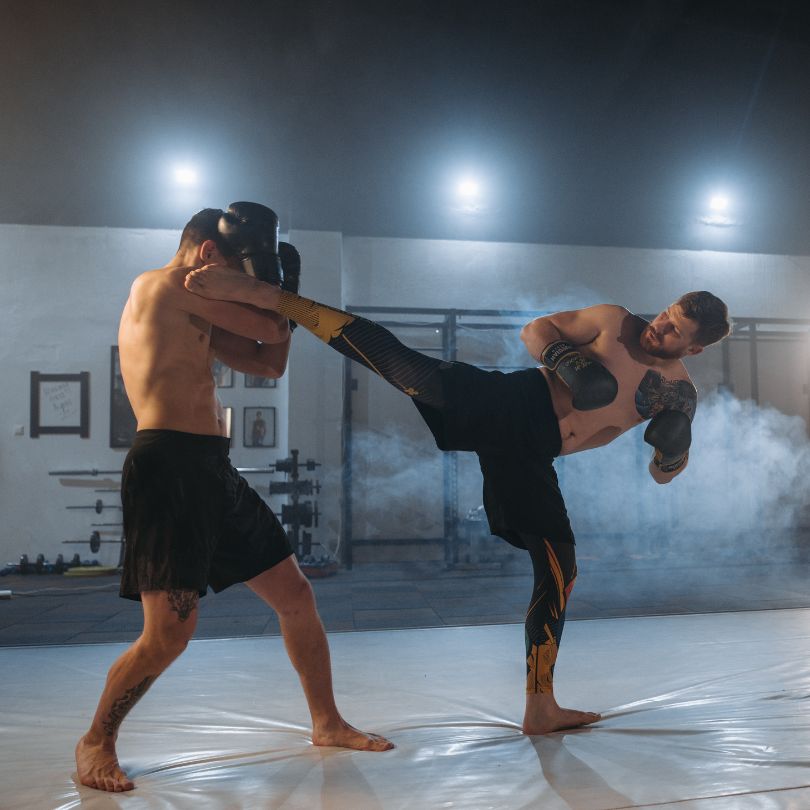Mixed Martial Arts (MMA) is a thrilling sport that merges various fighting disciplines, offering a dynamic experience for both fans and athletes. Fighters often excel in one primary style and enhance their skills by integrating techniques from other disciplines. In this blog, we'll examine the key martial arts that influence the action inside the Octagon:
Boxing
Boxing is fundamental to many MMA fighters' striking techniques. Known for its precision, power, and timing, boxing trains fighters to deliver powerful punches while maintaining effective defense with agile footwork and head movement. Fighters with a strong boxing background often showcase excellent hand speed and striking combinations, leading to frequent knockouts.
Muay Thai (Thai Boxing)
Muay Thai, a striking art from Thailand, plays a vital role in MMA. Similar to kickboxing but with the addition of elbows, Muay Thai enables fighters to punch, kick, and knee with effectiveness. Its clinch work is particularly valuable for controlling opponents, landing strikes, and setting up takedowns.
Brazilian Jiu-Jitsu (BJJ)
In ground-based MMA combat, Brazilian Jiu-Jitsu (BJJ) is a leading method. It emphasises outmaneuvering and submitting opponents through leverage, body positioning, and technique. BJJ focuses on joint locks and chokes from various positions like guard, mount, side control, and back control, making it crucial for maintaining control and ending fights on the ground.
Kickboxing
Kickboxing shares similarities with Muay Thai, emphasizing striking techniques. Kickboxers are known for their ability to control distance, strike from various angles, and outmaneuver opponents with precise footwork. This style is effective for those who prefer to attack from a distance and vary their attacks to keep opponents off balance.
Wrestling
Wrestling is a key discipline in MMA, producing many UFC champions. Wrestlers excel in directing the fight's trajectory, whether keeping it standing or bringing it to the ground. Their strength and control during takedowns are well-regarded and crucial for controlling the pace of the fight.
Taekwondo
Taekwondo is a striking art recognized for its fast, dynamic kicks. Fighters who integrate Taekwondo into their MMA repertoire use flashy spinning and high kicks to maintain distance and surprise opponents with unconventional techniques. While less common in MMA, Taekwondo can create spectacular knockouts.
Karate
Karate introduces a unique striking style to MMA, focusing on speed, precision, and unusual attack angles. Karate fighters are known for their stance and ability to quickly move in and out of range with powerful strikes. They often use explosive, straight-line techniques and counter-striking to catch opponents off guard.
Judo
Judo is a grappling art notable for its emphasis on throws and trips. Unlike Brazilian Jiu-Jitsu, which focuses more on ground fighting, Judo excels in using balance and leverage to throw opponents while standing. Once on the ground, Judokas often transition to submission attempts or maintain dominant control.
In summary, MMA showcases unparalleled versatility, with fighters blending various martial arts to create a comprehensive skill set. Mastery of striking, grappling, and control techniques is essential for success in the Octagon. The best fighters seamlessly integrate these disciplines into their unique strategies, leveraging the strengths of each to excel in competition.


